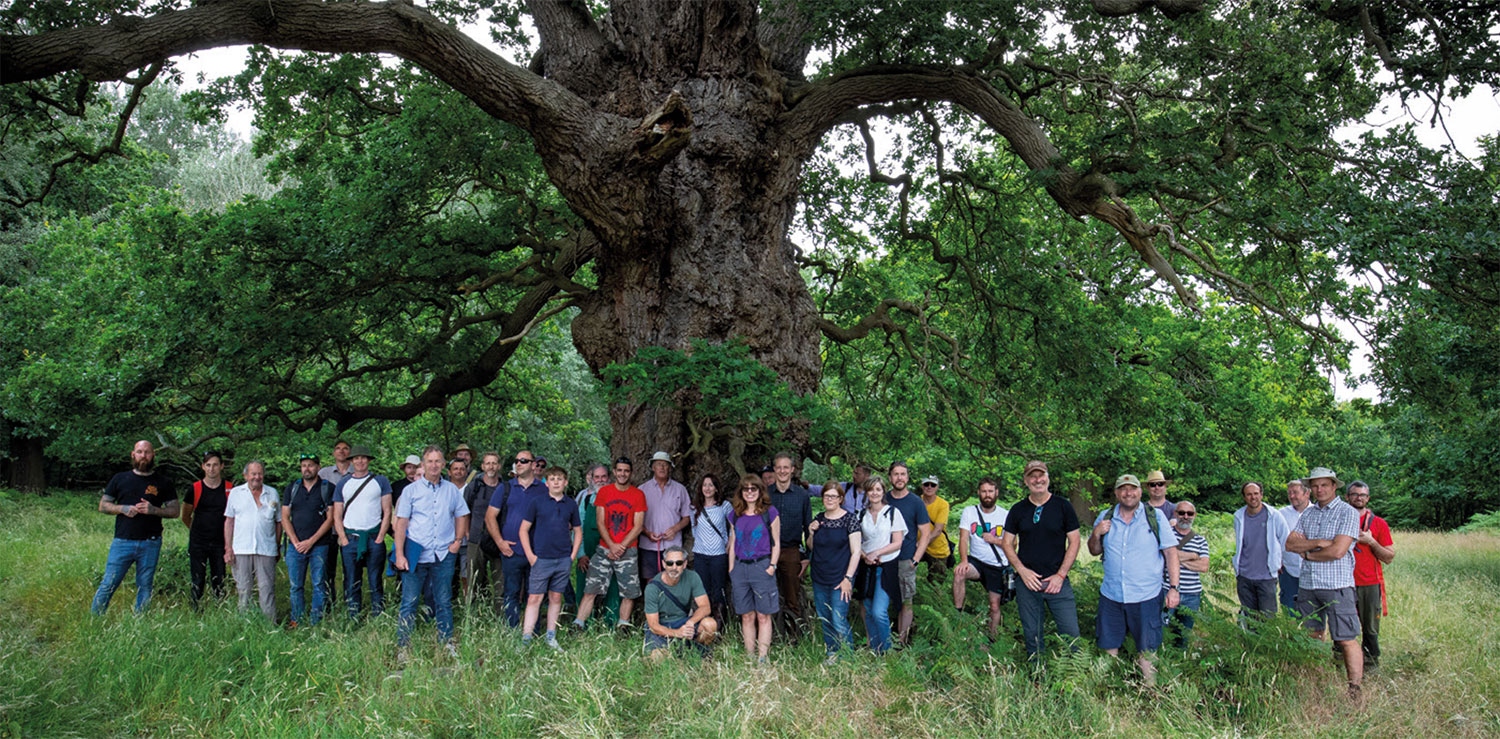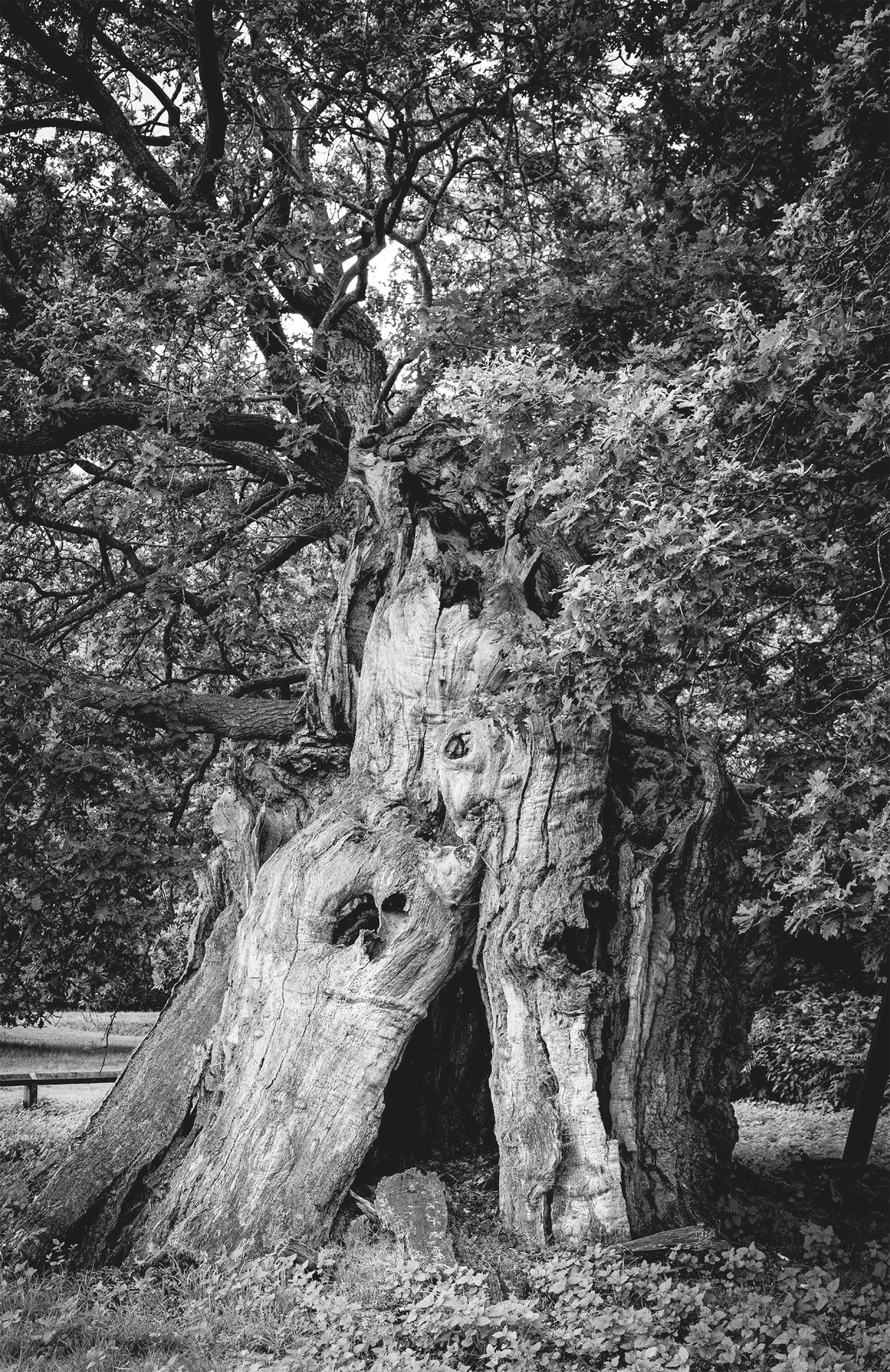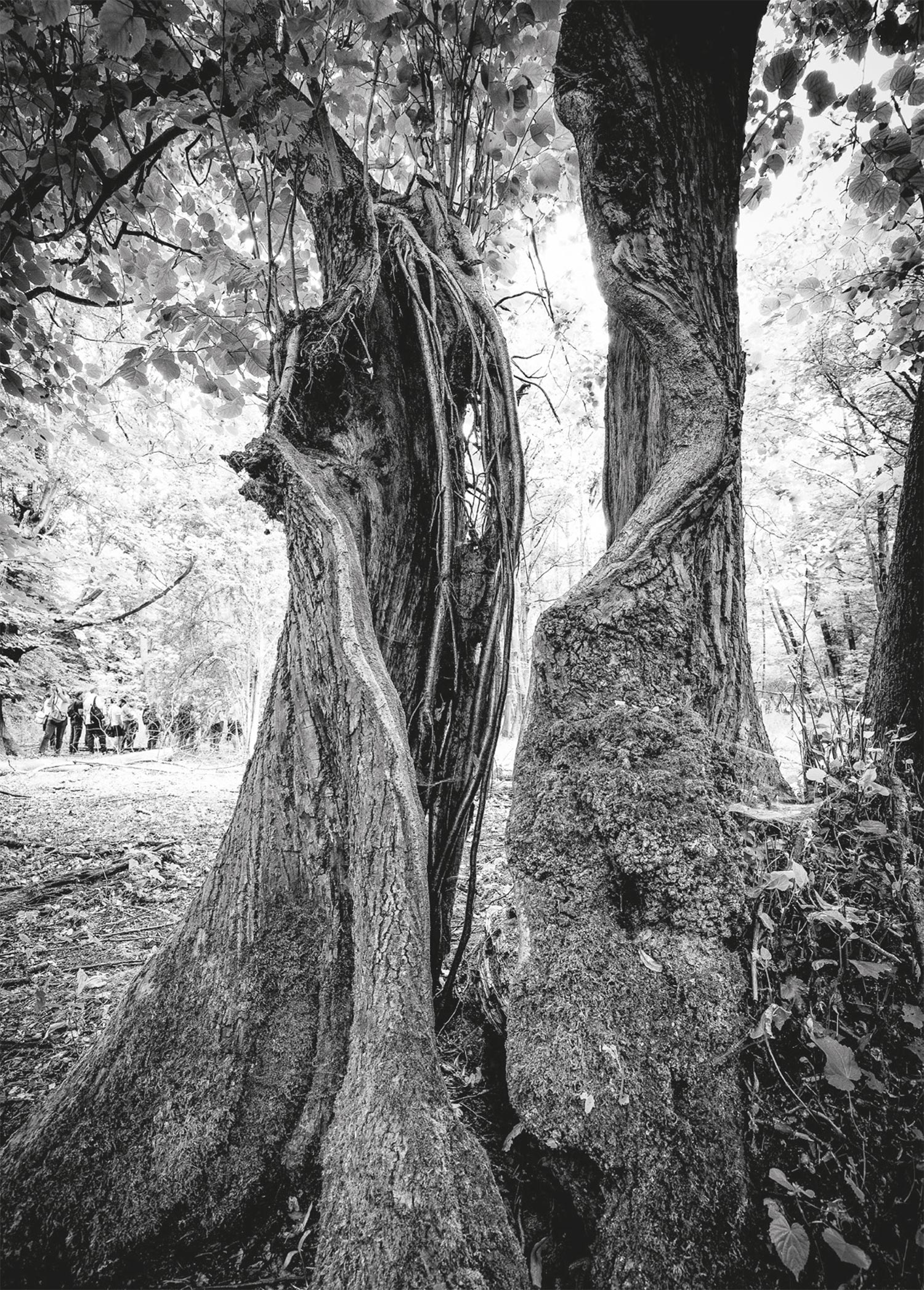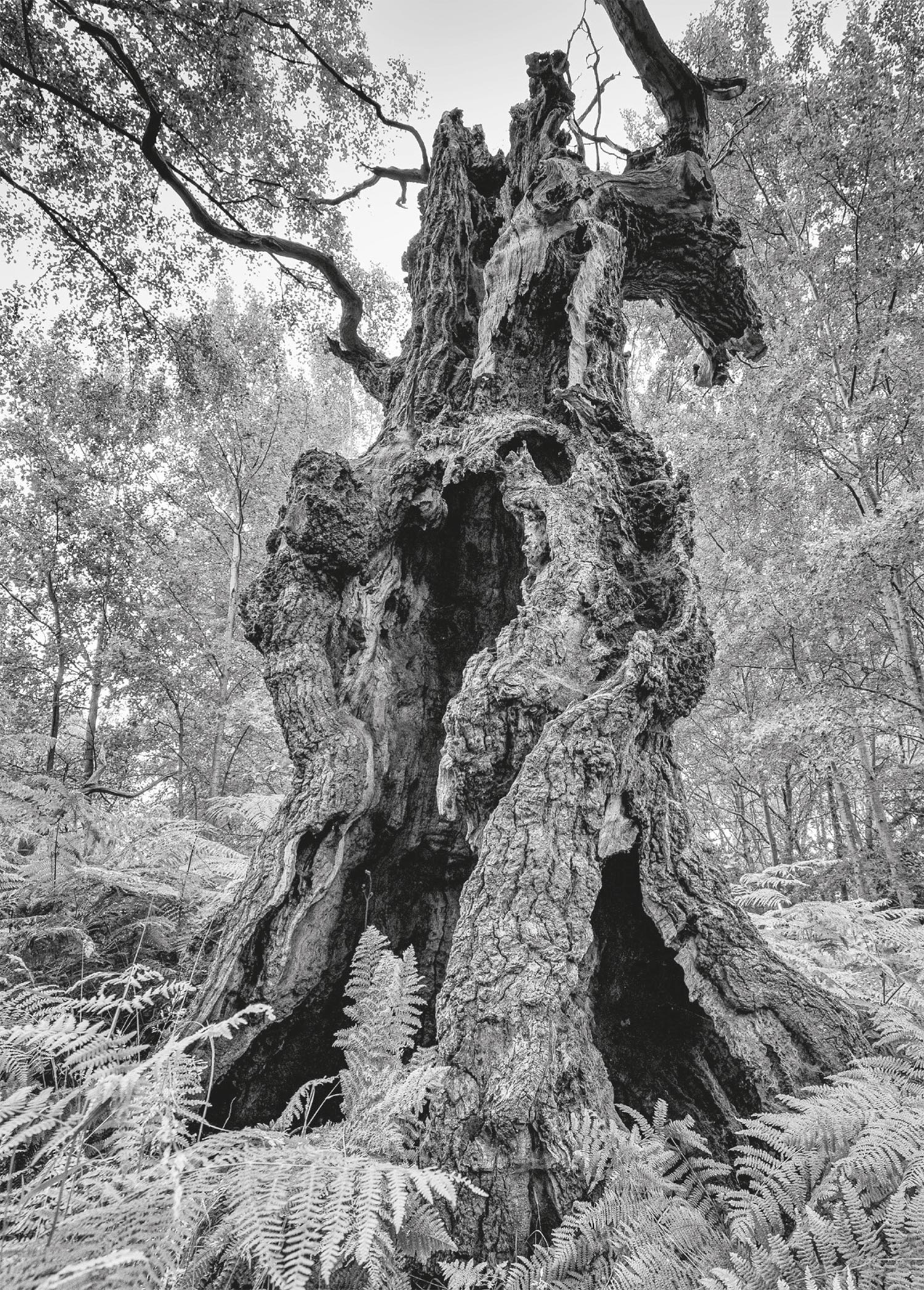
Thinking Arbs under the ‘giraffe’ pollard.
On Saturday 6 July just over 60 people attended the latest Thinking Arbs day at Windsor Great Park in Berkshire. The event is one in a series which Ted Green has been running for the last few years, aimed at getting arborists and other like-minded people together to talk and debate trees in the field.
This was the first time Ted has taken a Thinking Arbs group around Windsor Great Park, which is a place he knows well as he has lived and worked there since he was a child. The over 4,800 acres include a deer park which for centuries was the private hunting ground of Windsor Castle. It is a site of special scientific interest and is world renowned for its incredible biodiversity, including many rare plants and fungi.

Ancient oak, Windsor.
The group met at the Crown Estates, Windsor Great Park Environmental Centre, and then headed down the Lime Avenue to stop to discuss the first tree. This was a large beech tree set just behind a fence, which Ted had noticed in the past as having Meripilus giganteus growing at its base. He said he thinks the arboricultural industry has a poor understanding of mycology, and we are too quick to condemn trees where we see fungi fruiting. Ted observed that since he first saw the Meripilus giganteus brackets at the tree’s base, new (and very visible) roots have formed. He challenged the audience by suggesting that the tree can recover from the effects of the fungi and that the new roots indicate that the tree has stabilised. These comments didn’t sit well with everyone in the audience and were perhaps a bit controversial for some first thing on a Saturday morning!
Our next stop was to look at an ancient oak, just off the Forest Road near the A332. This tree has a phenomenal girth and is supported by a series of props. Here we debated the merits of mulch around old trees and whether biochar would be appropriate to use in similar situations. Henry Bexley, who manages Hatfield Forest for the National Trust in Essex, then told us that research is being undertaken at Hatfield over the next three years into the potential benefits of biochar. It is being trialled (under licence from Natural England) on the rides in between the coppice which have become very compacted in recent years. Henry invited the audience to come to Hatfield to see the trial, and we plan to have an East Anglia Ancient Tree Forum meeting there in late November 2019 if anyone would like to come along to see it (www.ancienttreeforum.co.uk).

Hollow lime with aerial roots.
Ted then took us to see a tree he has named the ‘King Offa’s Oak’, which he claims has possibly the largest girth in the UK and is thought to be 1,300 years old. This is a great example of what Dr David Lonsdale describes as a tree dividing into semi-autonomous ‘functional units’, which develop in many of our oldest trees as the circumference becomes larger later in life. This tree has also been propped, and the arborist from the Crown Estate who helped fit the latest props described how the team had undertaken the work, including lightly pruning the tree. A few questions were raised and included ‘Does propping change the structural dynamic of the tree?’, ‘Could we stabilise the crown without props, through pruning?’
The topic of conversation next changed to tree health after Gary Battell, the Suffolk County Forester, spotted a large oak with a dead top and several black bleeds on its trunk. Gary told us how he has seen a huge increase in Phytophthora bleeds in recent years in East Anglia. He expressed his concerns about the general state of tree health in the UK and noted he had also started to see worryingly large numbers of dead Scots pine appearing this summer, in particular in the plantations beside the M25 motorway. He asked the questions ‘Why are we seeing tree diseases accelerating? Is it just down to climate change, or is there something else going on? Could it be due pollution, nitrification, acid rain etc.?’

Oak monolith.
Ted then took us to see several more incredible trees, including William the Conqueror’s Oak and a lime whose aerial roots are feeding in its hollow bole, recycling the nutrients. Jim Mullholland, the Arboricultural Association (and Ancient Tree Forum) Technical Officer, gave the audience an update on the VETcert qualification scheme which is nearing the end of the development phase. [See page 13 of the ARB Magazine or online here.] Some of the first exams in the UK for technicians and consultants took place in May as a trial and we had two candidates from the technician’s exam in the audience: they are amongst the first arborists in the UK to pass it. Matt Shute of East Devon Tree Care Ltd and Jamie Simpson, an independent arborist and woodland manager, then said a few words about their experiences of taking the exam. Well done, guys!
We finished the day under a ‘giraffe pollard’ which Ted said had been cut much higher than the conventional 6ft we see a lot of other pollards cut at. He said Oliver Rackham had come up with the term and thought that some pollards were cut like this in hunting forests to allow riders on horseback to hunt unimpeded or un-impaled by branches. Cutting at this height also meant more light could filter to ground level, which improved the grazing in the wood pasture.
Ted concluded the day by stating that his life-long love affair with arboriculture had started at Windsor, where he has been observing trees now for over eight decades. He was in the park after the 1987 hurricane when 900 healthy trees failed or snapped, and he said that not one of the ancient hollow trees had been lost. With his usual infectious enthusiasm he reminded us that fungi and hollowing are really good for trees and in fact, in combination with a small crown, are their long-term survival strategies.
Acknowledgements Thinking Arbs events would not be possible without the help of Reg Harris and the Association is enormously grateful for his support.
Images courtesy of Nick Beardmore.
This article was taken form Issue 186 Autumn 2019 of the ARB Magazine, which is available to view free to members by simply logging in to the website and viewing your profile area.